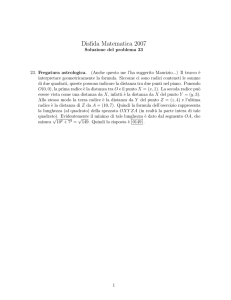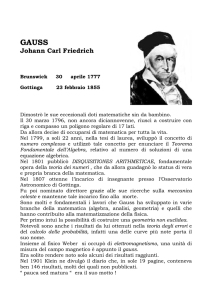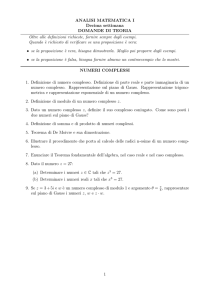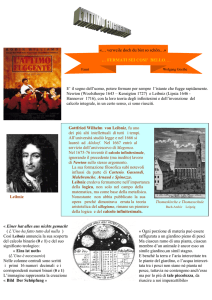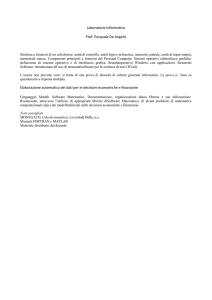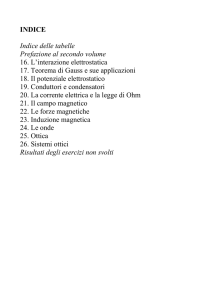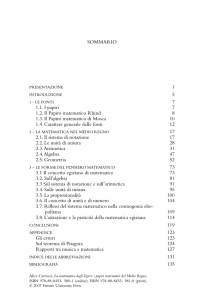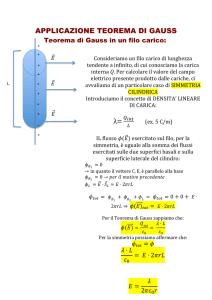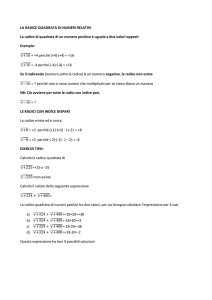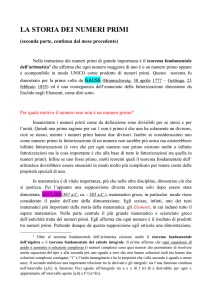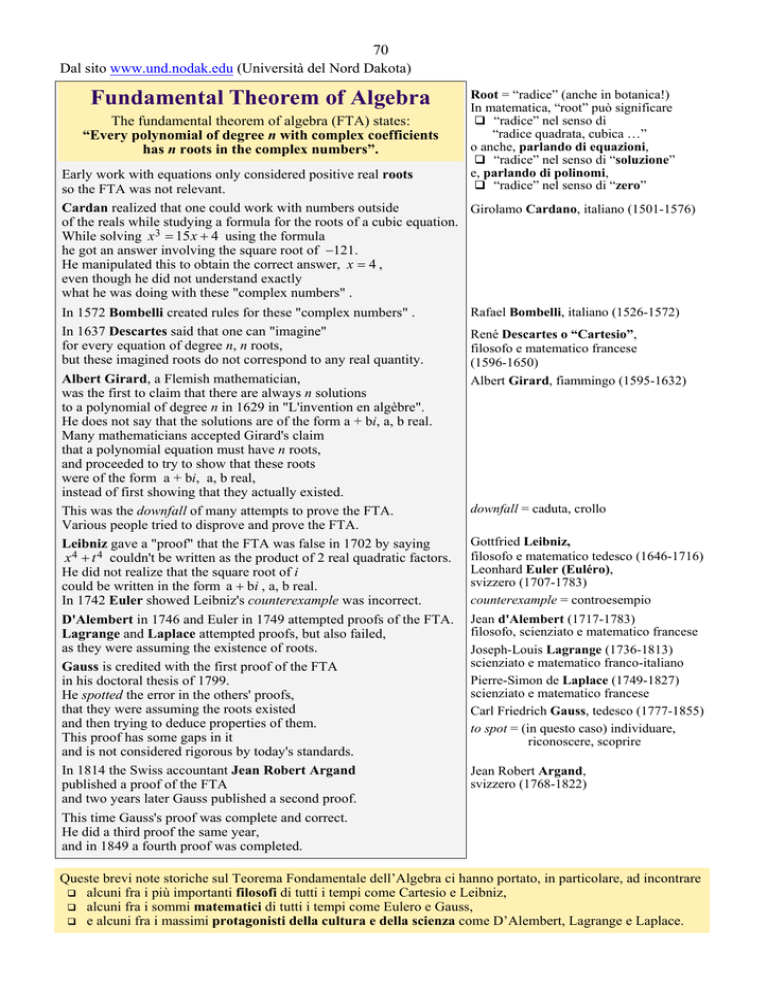
70
Dal sito www.und.nodak.edu (Università del Nord Dakota)
Fundamental Theorem of Algebra
The fundamental theorem of algebra (FTA) states:
“Every polynomial of degree n with complex coefficients
has n roots in the complex numbers”.
Root = “radice” (anche in botanica!)
In matematica, “root” può significare
“radice” nel senso di
“radice quadrata, cubica …”
o anche, parlando di equazioni,
“radice” nel senso di “soluzione”
e, parlando di polinomi,
“radice” nel senso di “zero”
Early work with equations only considered positive real roots
so the FTA was not relevant.
Cardan realized that one could work with numbers outside
Girolamo Cardano, italiano (1501-1576)
of the reals while studying a formula for the roots of a cubic equation.
While solving x3 = 15 x + 4 using the formula
he got an answer involving the square root of −121.
He manipulated this to obtain the correct answer, x = 4 ,
even though he did not understand exactly
what he was doing with these "complex numbers" .
Rafael Bombelli, italiano (1526-1572)
In 1572 Bombelli created rules for these "complex numbers" .
In 1637 Descartes said that one can "imagine"
for every equation of degree n, n roots,
but these imagined roots do not correspond to any real quantity.
Albert Girard, a Flemish mathematician,
was the first to claim that there are always n solutions
to a polynomial of degree n in 1629 in "L'invention en algèbre".
He does not say that the solutions are of the form a + bi, a, b real.
Many mathematicians accepted Girard's claim
that a polynomial equation must have n roots,
and proceeded to try to show that these roots
were of the form a + bi, a, b real,
instead of first showing that they actually existed.
This was the downfall of many attempts to prove the FTA.
Various people tried to disprove and prove the FTA.
Leibniz gave a "proof" that the FTA was false in 1702 by saying
x 4 + t 4 couldn't be written as the product of 2 real quadratic factors.
He did not realize that the square root of i
could be written in the form a + bi , a, b real.
In 1742 Euler showed Leibniz's counterexample was incorrect.
D'Alembert in 1746 and Euler in 1749 attempted proofs of the FTA.
Lagrange and Laplace attempted proofs, but also failed,
as they were assuming the existence of roots.
Gauss is credited with the first proof of the FTA
in his doctoral thesis of 1799.
He spotted the error in the others' proofs,
that they were assuming the roots existed
and then trying to deduce properties of them.
This proof has some gaps in it
and is not considered rigorous by today's standards.
In 1814 the Swiss accountant Jean Robert Argand
published a proof of the FTA
and two years later Gauss published a second proof.
This time Gauss's proof was complete and correct.
He did a third proof the same year,
and in 1849 a fourth proof was completed.
René Descartes o “Cartesio”,
filosofo e matematico francese
(1596-1650)
Albert Girard, fiammingo (1595-1632)
downfall = caduta, crollo
Gottfried Leibniz,
filosofo e matematico tedesco (1646-1716)
Leonhard Euler (Euléro),
svizzero (1707-1783)
counterexample = controesempio
Jean d'Alembert (1717-1783)
filosofo, scienziato e matematico francese
Joseph-Louis Lagrange (1736-1813)
scienziato e matematico franco-italiano
Pierre-Simon de Laplace (1749-1827)
scienziato e matematico francese
Carl Friedrich Gauss, tedesco (1777-1855)
to spot = (in questo caso) individuare,
riconoscere, scoprire
Jean Robert Argand,
svizzero (1768-1822)
Queste brevi note storiche sul Teorema Fondamentale dell’Algebra ci hanno portato, in particolare, ad incontrare
alcuni fra i più importanti filosofi di tutti i tempi come Cartesio e Leibniz,
alcuni fra i sommi matematici di tutti i tempi come Eulero e Gauss,
e alcuni fra i massimi protagonisti della cultura e della scienza come D’Alembert, Lagrange e Laplace.

